The Colonial Building
7. Look across Military Road to the Colonial Building, the former seat of government in Newfoundland and Labrador and a site of women's struggles for equality.
The Colonial Building has a long and important history in the political life of the colony and province. Until 1960, the building was the seat of government where legislation was passed, some of which impacted particularly on women.
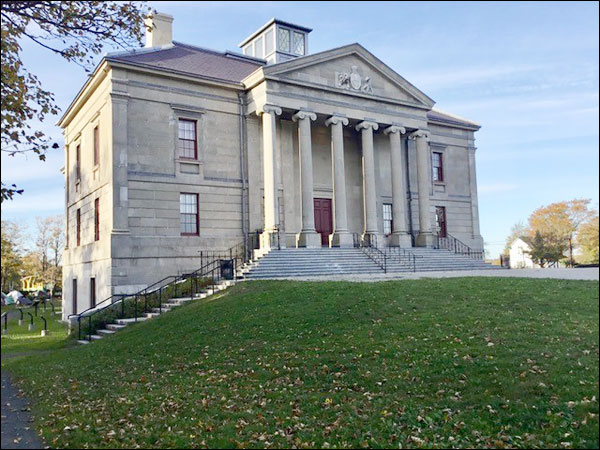
Suffrage for Women
In March 1891, fifty St. John's women donned white ribbons symbolizing purity and marched to the Colonial Building to petition Government members for the right to vote in local political contests. Affiliated with the International Women's Christian Temperance Union (WCTU), this group of women did not ask for universal female suffrage. Their demands ultimately addressed the principle of women's suffrage and women's roles in societies. It would take another thirty-four years before Newfoundland women won the right to vote, and to be elected for office.
The second campaign of the suffrage movement, under the banner of the Women's Franchise League, took its energy from the successful work of the Women's Patriotic Association, in which many suffragists held leadership positions.
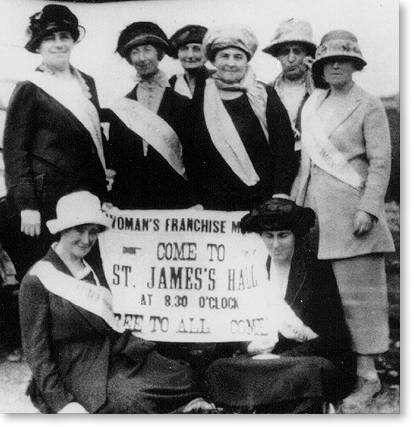
Better educated and more affluent, these women had to bridge class, geographic and religious differences, to gain the support of the mass of women. The campaign began in May 1920 and included articles to the papers, letters to the editor, public canvassing, signing of petitions, as well as advertising during film screenings. They were unsuccessful in getting the legislation passed in the 1921 session, but the campaign continued for the next few years.
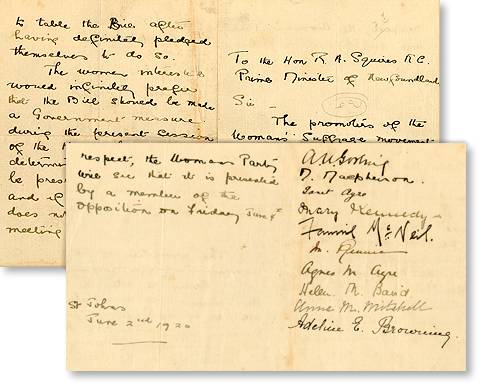
Sir- The promoters of the Woman's Suffrage movement beg to draw the attention of the Premier to the incomprehensible attitude of the government towards the question of the enfranchisement of women, as evidenced in the failure of the two Government members to table the Bill after having pledged themselves to do so. The women interested would infinitely prefer that the Bill should be made a Government measure during the present session of the House; but they are determined that it shall be presented this year and if the Government does not see its way to meeting their views in this respect, the Women's Party will see that it is presented by a member of the opposition on Friday June 4th.
St. John's, June 2nd, 1920.
AN Gosling, M. Macpherson, Janet Ayre, Mary Kennedy, Fannie McNeil, M. Rennie, Agnes M. Ayre, Helen M Baird, Anna M. Mitchell, Madeline E. Bowering.
In 1925, with the support of the Prime Minister, leading members of the cabinet, and a number of outport members of Government, the franchise bill passed through the Assembly and the Legislative Council. The suffragists celebrated their newly won rights on April 21, 1925 with a women-only Victory Banquet.
Chinese Immigration
Newfoundland was not an exclusively white colony. Over 400 Chinese men immigrated to Newfoundland between 1890 and 1949. The earliest documentation of the Chinese in Newfoundland dates to 1895, when an advertisement for the opening of a laundry appeared on August 24, 1895 in The Evening Telegram and The Evening Herald newspapers. Racism inhibited Chinese men from working in other sectors of the economy. Within a decade three Chinese hand laundries were operating in St. John's. Eventually, some men found work as gardeners, domestics, miners or fishery workers. Much later, Chinese restaurants employed many immigrants.
In 1906, a head tax of $300, legislated in "An Act Respecting the Immigration of Chinese Persons", was adopted by the House of Assembly in the Colonial Building. This undoubtedly restricted the immigration of Chinese women and children who might have joined the male family members living in Newfoundland. Most of the Chinese immigrants to Newfoundland were too poor to pay the tax.
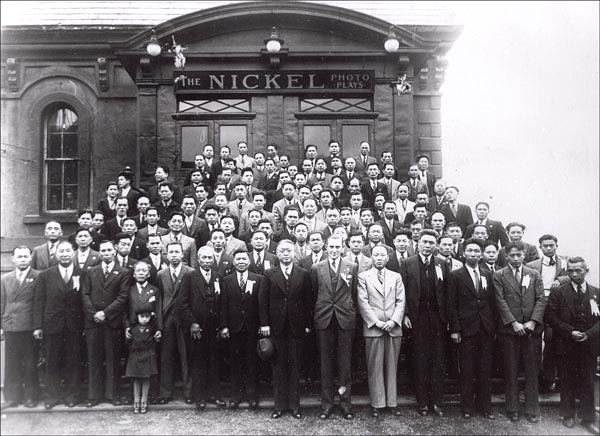
Some women may have joined their husbands in Newfoundland, but evidence of the first Chinese woman living in the colony does not occur until 1927. It was reported that Mrs. Lee, wife to Au Kim Lee, a Chinese naturalized British citizen who had arrived in St. John's in 1899, did not stay long but returned to China while pregnant and gave birth on the journey.
After Newfoundland joined Canada in 1949 the Canadian Citizenship Act of 1947 immediately applied to province, resulting in an abolition of the head tax. Wives and children under twenty-one were eligible for sponsorship to enter Canada. In 1950 three Chinese women immigrated and joined their husbands here. These included Winnie Fong and her 15-year-old daughter who went to Botwood, Newfoundland to join her husband Harvey.
Bella 'Bobbie' Robertson (1892-1992)
Bobbie Robertson came to Newfoundland from Scotland with her husband in 1923. In 1951, she was made Newfoundland representative for the Department of Trade and Commerce, the only female Trade Commissioner in Canada at the time. When she retired in 1966, she went to work with the Newfoundland Historical Society in the Colonial Building.
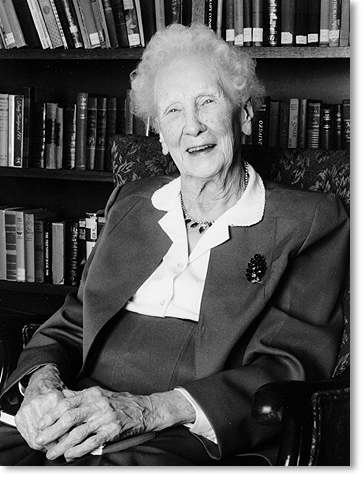
Bobbie was a colourful and interesting character who maintained a wide circle of friends in the city and around the world. She was noted for her direct speech and firm opinions, as well as her tremendous ability to locate historical information for those who sought her help. Bobbie kept thousands of active files on Newfoundland subjects in the small rooms allotted to the Society in the basement of the Colonial Building. A meeting with her could clarify research questions and open links to richer documents and details to be examined.
In 1976 she was presented with the first Newfoundland Historical Society Heritage Award for her unique contribution to the preservation of Newfoundland culture. Bobbie was also awarded an Honorary LL.D. by Memorial University in 1984.




